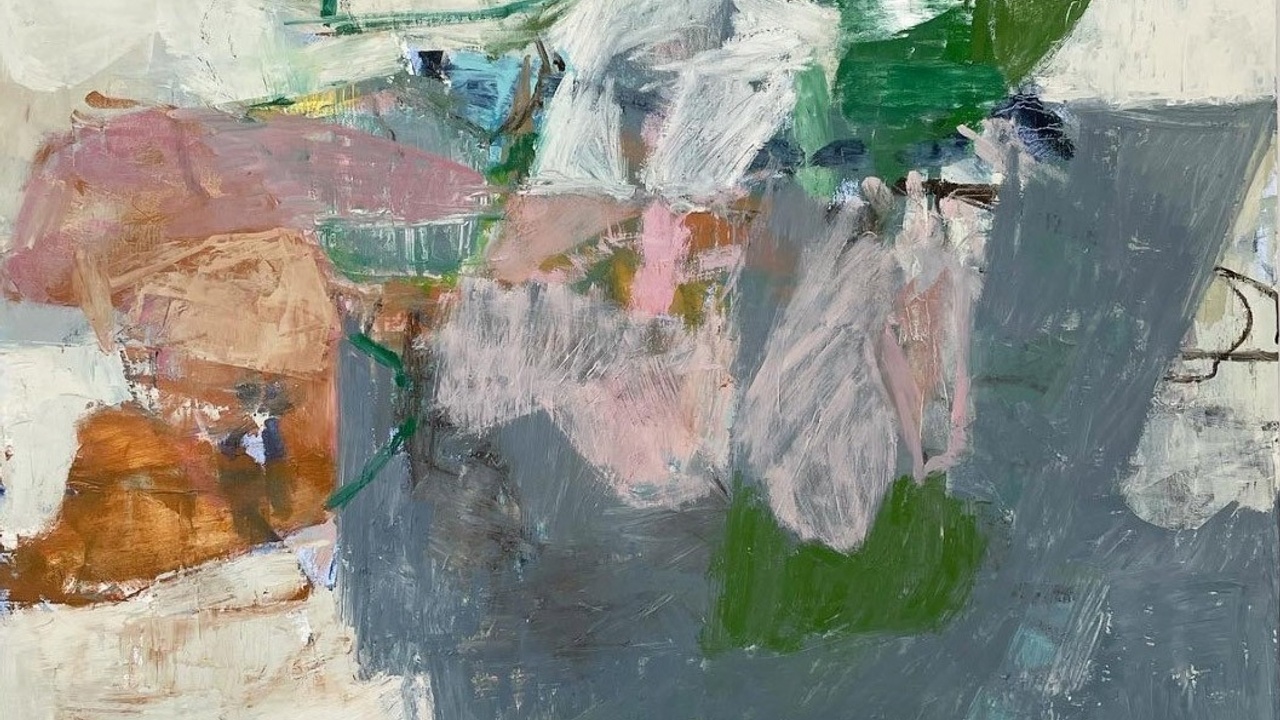
Creating Strong Compositions
While much compositional knowledge is intuitive, learning how to recognize and use spatial principles such as rhythm, balance, unity, focal points, and directional movement gives you powerful tools that can elevate and invigorate your work.
Abstract art design principles are hardly different from representational design principles, but implementing them can take some eye training. Taking a closer look at these fundamental elements can be helpful.
Contrast is variety. The thoughtful arrangement of contrasts or value can result in harmony. It is the presence of any opposing or complimentary elements. Even a single element, such as texture, color or tone, can, on its own create contrast by its juxtaposition with the negative space around it.
Directional movement is important to implement and to notice. A few ways to cause the eye to move around a composition could be directional lines, or bridge elements, which can connect various points of interest, giving the eye a path to follow.
Rhythm is created when one or more elements in a painting is repeated. That can create the visual equivalent of a rhythmic beat in music. This could be a line, or color, or repeated shapes.
Balance is achieved when each area of the work, whether it contains the focal point or not, holds its own visually, contributing to the overall composition without dominating it. We want our painting to be balanced but not so much so that it becomes boring.

Jenny Nelson, Collage on Board
One of the most helpful tools to strengthen the eye for composition is creating collage.
Because collage allows you to move shapes around immediately, versus painting, you can quickly discover what placements feel right, wrong, interesting or flat. Collage allows you to ask visual questions with ease. I like to stick with a black and white palette as it leaves out the color challenge and allows me to focus strictly on value and arrangement. It has a simple strength and beauty.
When you collage, your brain clicks into high gear, problem-solving mode.
You quickly become aware of how the placement, size, and distribution of shapes, value and line, effectively direct the eye through pictorial space. It's easier to recognize high and low value contrast areas, and the power of directional lines in your work.
Gaining mastery of composition is a combination of knowing the rules, letting the magic happen, and intuition.
Arranging abstract elements in a way that is balanced, studied and compelling requires some work. The more paintings, drawings or collage you create, the more trained your eye becomes.
When a composition becomes unified, no single element of the piece distracts us from comprehending the artwork as a whole. Individual elements might stand out or be dominant, but if the work is unified, all of the parts end up with a feeling that is overall 'right'.

Amy Sillman A Shape that Stands Up and Listens #31, 2012
Ink and chalk on paper 30" × 22-1/2"
Let's take a look at the work on paper above and see what compositional qualities make it so compelling! Immediately, my eye is lead around by the lights and darks, but also the strong diagonals. The inclusion of both painting and drawing elements creates an exciting surface to explore.
I begin with the shape in the lower left-hand corner, the brightest, flat white form, catches my eye. From there I move to the light pink shape in the middle and follow its diagonal pull up to the darker warm brown forms that are rigid and decorative. From here I am lifted to the top of the picture by the sturdy black and white shape that attaches to the top.
With delight, I notice the drawing element, that looks like a hand. It pulls my eye over to the right. It is nearly alone in this upper right corner, and is a surprise element, oddly recognizable. I then follow where the hand points me, down to the inky earth colored lines, surrounded by soft greys. I notice that there is an almost transparent diagonal line at the bottom right.
Most importantly, my eye moves all around, it doesn't get stuck anywhere. There are strong directors in the piece. Diagonals move me through, but the verticals keep the composition steady.
The palette is soft, some of the edges of the shapes are hard and rigid, but there are also loose, gestural lines. These more muted, transparent marks create a feeling of depth and mystery.
Once my eyes have moved through the work once, I begin to spend time looking at all the individual pieces. The sense of "rightness" between all the parts invites me to stay a while and explore.
"Watch the greater image materialize. You need that thing over there to tell you what to do about that thing over here."
— Robert Genn
[Image at top: Jenny Nelson, segment of "To Be Here Wishing #2", oil on canvas]
Join my monthly newsletter and never miss a post
Each month I share explorations of master artists' works, elements of abstraction, and behind-the-scenes of my own painting journey, delivered to your inbox.

